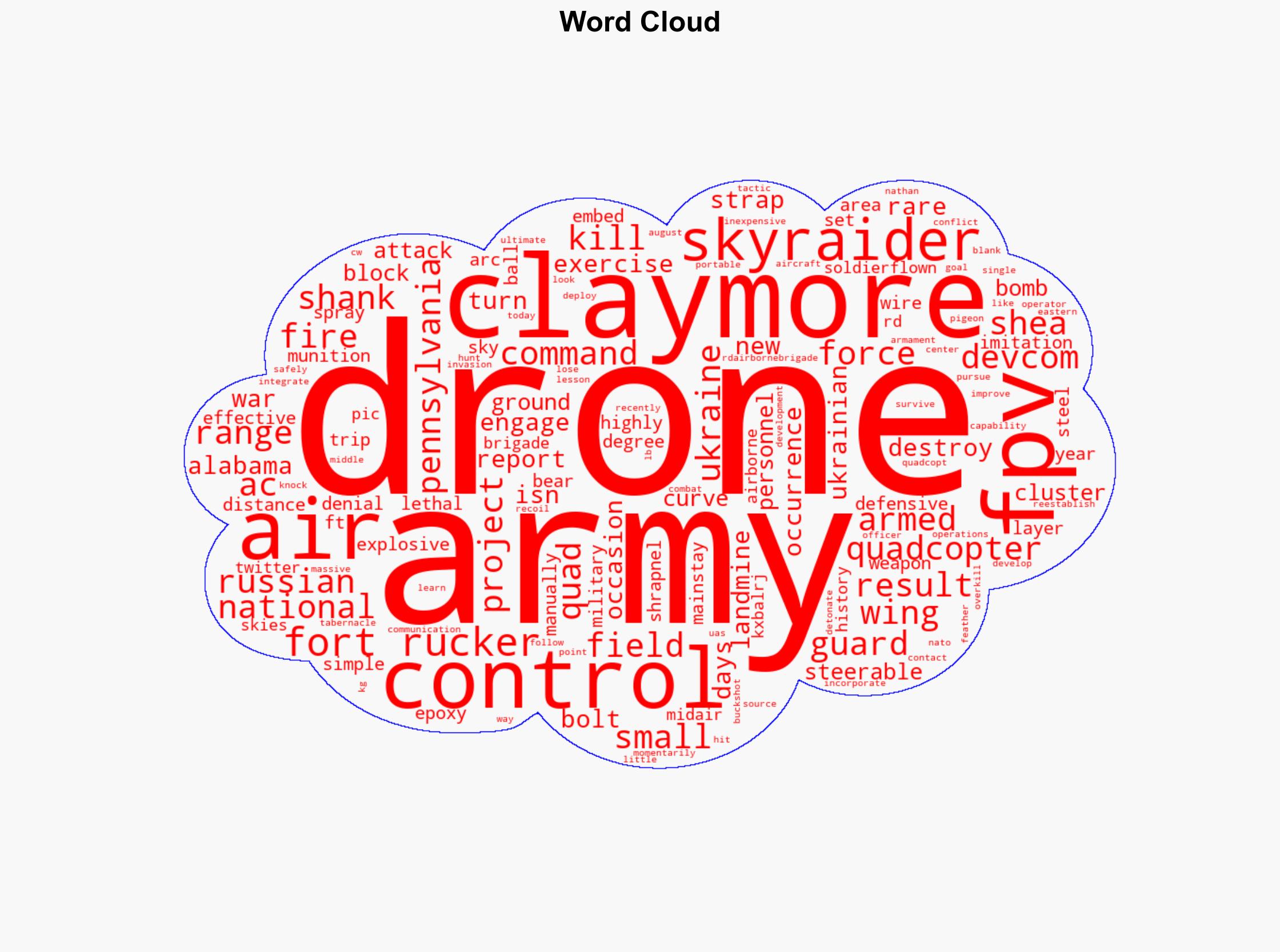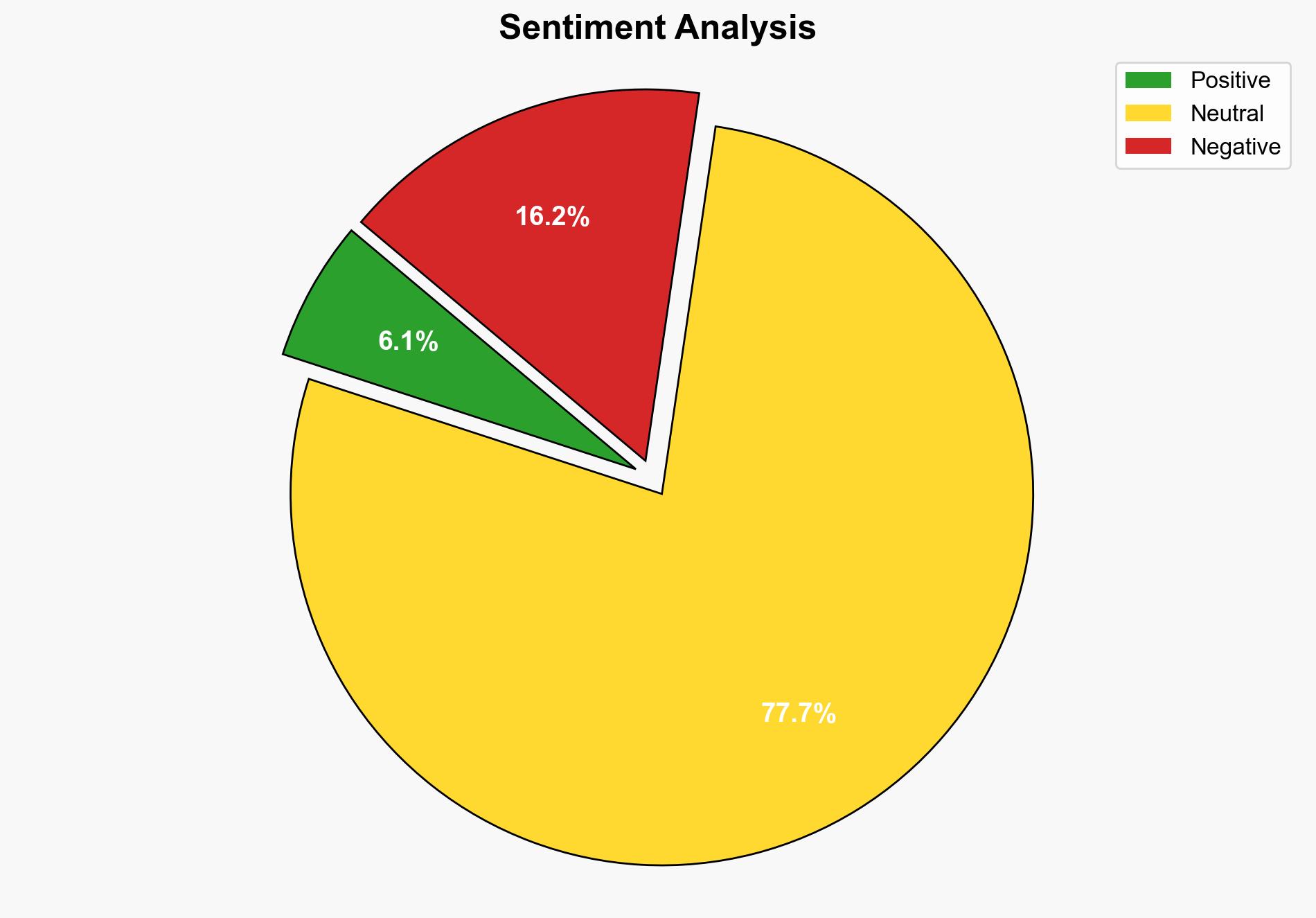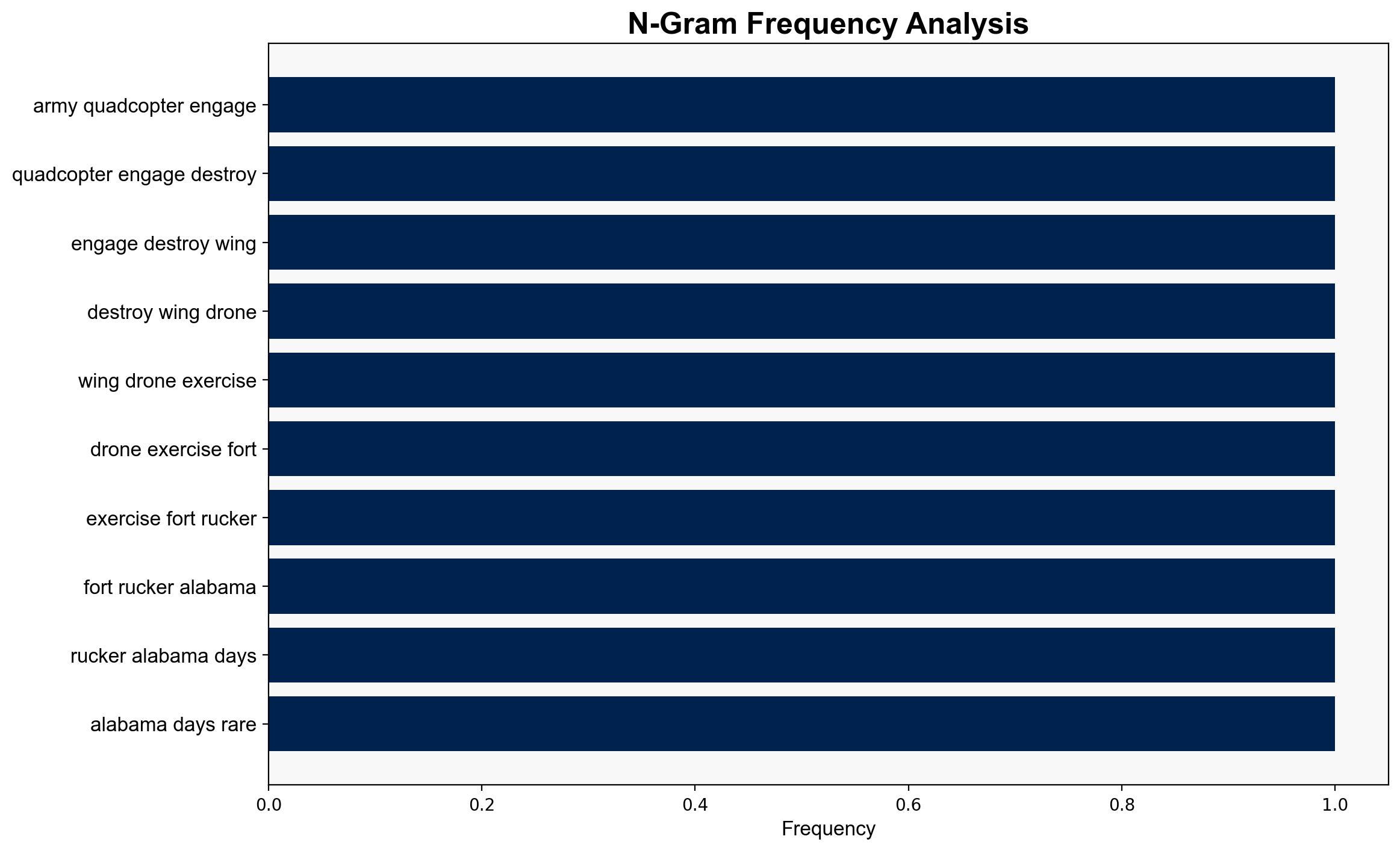Watch US Army quadcopter takes down drone with Claymore mine – New Atlas
Published on: 2025-08-24
Intelligence Report: Watch US Army quadcopter takes down drone with Claymore mine – New Atlas
1. BLUF (Bottom Line Up Front)
The strategic judgment is that the integration of Claymore mines with quadcopters represents a significant evolution in drone warfare tactics, with a moderate confidence level. The most supported hypothesis is that this development is primarily aimed at enhancing the U.S. military’s capability to counter enemy drones effectively, drawing lessons from recent conflicts. Recommended action includes further investment in counter-drone technologies and training to maintain tactical superiority.
2. Competing Hypotheses
1. **Hypothesis A**: The use of Claymore mines on quadcopters is a direct response to evolving threats from adversaries’ drone capabilities, particularly informed by experiences in Ukraine and the Middle East. This hypothesis suggests a focus on adapting to asymmetric warfare environments where drones are increasingly used for offensive operations.
2. **Hypothesis B**: The development is primarily a demonstration of technological innovation and experimentation, aimed at exploring new military capabilities rather than responding to an immediate threat. This hypothesis implies a broader strategic intent to explore various applications of drone technology beyond current conflict scenarios.
Using ACH 2.0, Hypothesis A is better supported due to the specific mention of lessons learned from the Russian invasion of Ukraine and Middle Eastern conflicts, indicating a clear operational need driving this innovation.
3. Key Assumptions and Red Flags
– **Assumptions**: It is assumed that adversaries will continue to enhance their drone capabilities, necessitating advanced countermeasures. Another assumption is that the integration of Claymore mines with drones is feasible and sustainable in combat scenarios.
– **Red Flags**: The effectiveness and safety of using Claymore mines on drones could be overestimated, potentially leading to operational risks. There is also a lack of detailed information on the operational testing and success rates of such deployments.
4. Implications and Strategic Risks
The integration of Claymore mines with drones could lead to a new arms race in drone warfare, prompting adversaries to develop countermeasures or similar technologies. This could escalate conflicts where drones are used, increasing the risk of collateral damage and civilian casualties. Geopolitically, it may strain relations with nations concerned about the proliferation of such technologies.
5. Recommendations and Outlook
- Invest in research and development of counter-drone technologies to maintain a tactical edge.
- Enhance training programs for operators to ensure safe and effective deployment of these systems.
- Scenario-based projections:
- Best: Successful integration leads to enhanced defense capabilities with minimal collateral damage.
- Worst: Misuse or malfunction leads to significant unintended casualties, prompting international backlash.
- Most Likely: Gradual integration into military operations with ongoing adjustments based on field feedback.
6. Key Individuals and Entities
– Nathan Shea: UAS operations officer involved in the project.
7. Thematic Tags
national security threats, cybersecurity, counter-terrorism, regional focus





